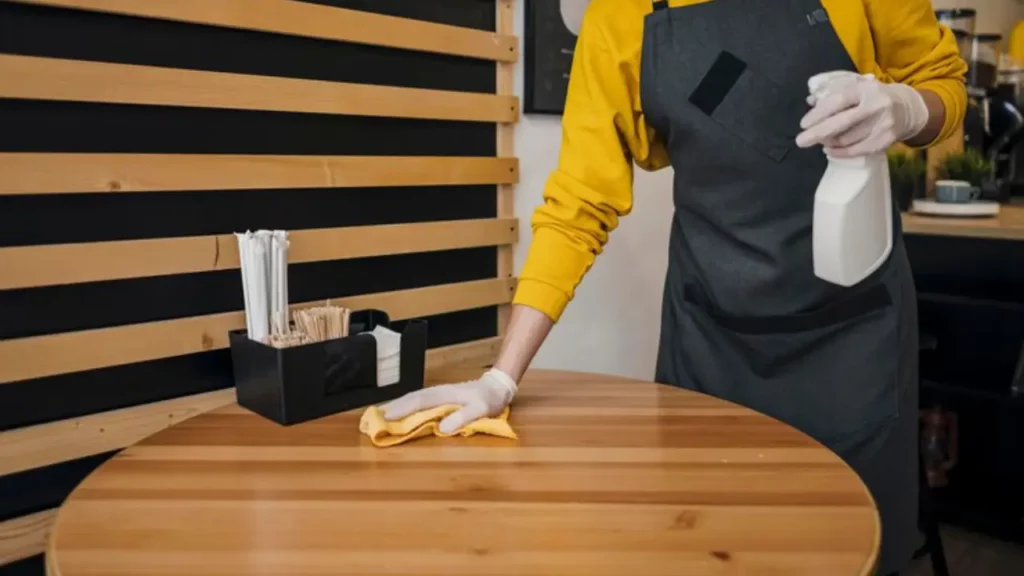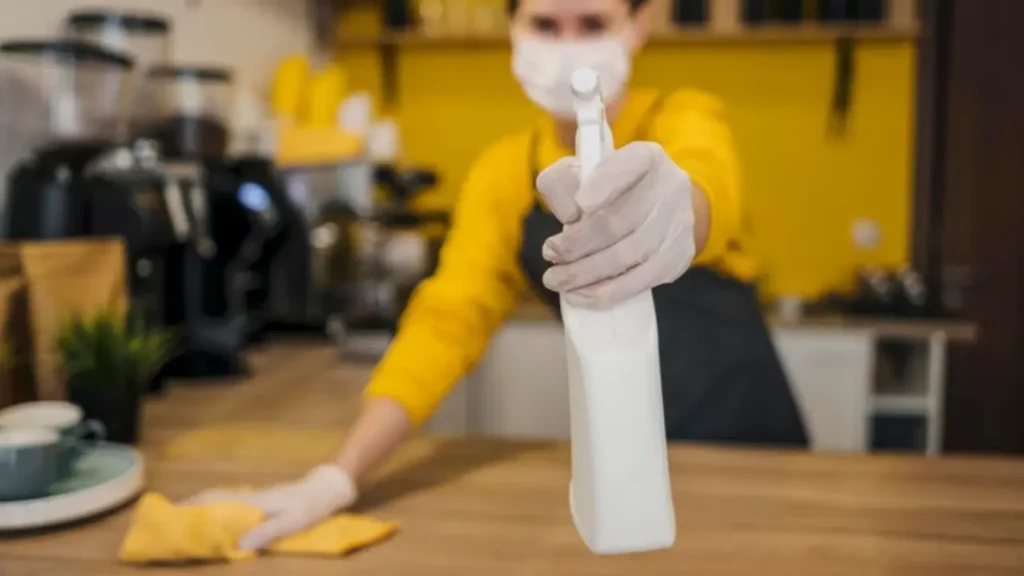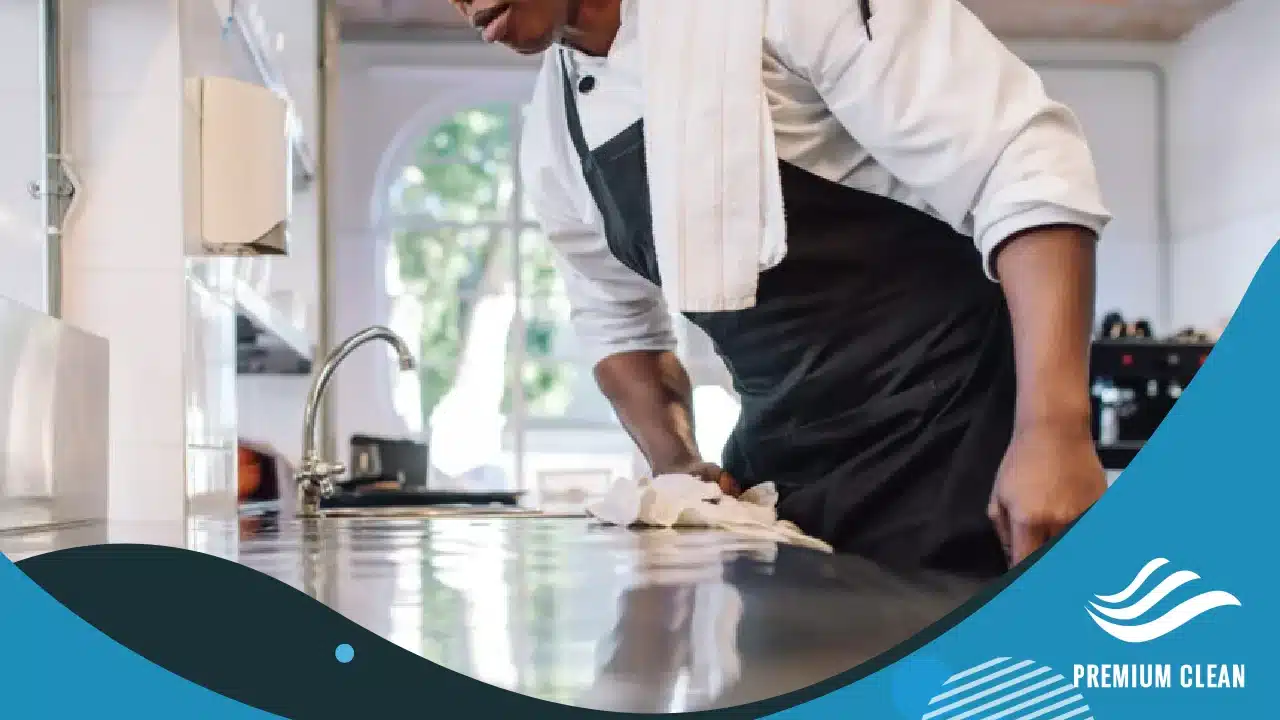In a fast-paced and demanding commercial kitchen, maintaining a clean and hygienic environment is crucial for the safety and well-being of both the customers and the staff. Proper sanitation and commercial cleaning practices are essential to prevent the spread of harmful bacteria and pathogens that can cause foodborne illnesses.
To achieve this, it is necessary to implement a comprehensive cleaning routine that goes beyond just wiping down surfaces and sweeping the floors. This includes regular deep cleaning of equipment and appliances, washing and sanitizing all utensils and dishes, as well as ensuring that all food storage areas are kept clean and organized.
In addition to these tasks, it is also important to properly train staff on proper hygiene practices, including hand washing and food handling techniques. By emphasizing the importance of cleanliness and providing the necessary resources and training, a commercial kitchen can maintain a spotless and hygienic environment, which will ultimately lead to happier customers and a more successful business.
Commercial Kitchen Cleaning Secrets
The Routine
Commercial Kitchen Cleaning Schedule:
Keeping a clean and tidy environment is essential for a healthy and stress-free lifestyle. Establishing a commercial kitchen cleaning routine is the first step toward achieving this goal. Start by creating a comprehensive commercial cleaning schedule that covers all the areas of your living space. Divide the tasks into manageable chunks, allocating specific time slots for daily wipe-downs and weekly deep cleans.
For your daily cleaning, focus on high-touch areas such as doorknobs, countertops, and light switches. Use disinfectant wipes or a cleaning solution to get rid of any dirt and germs. For weekly deep cleans, tackle more significant tasks such as vacuuming, dusting, and mopping. Make sure to clean every nook and cranny, including hard-to-reach places like ceiling fans, baseboards, and behind furniture.
By following a consistent cleaning routine, you’ll be able to maintain a cleaner and healthier living space, which can improve your overall well-being.

Colour-Coded Cleaning:
Implementing a colour-coded system for your cleaning tools and cloths can significantly improve your cleaning process. By designating specific colours to different areas or tasks, you can ensure that each tool and cloth serves its intended purpose and avoid cross-contamination. For instance, you can use green for cleaning surfaces where food is prepared, red for high-risk areas such as toilets, and blue for mirrors and windows. By adopting this system, you can not only maintain a clean and hygienic kitchen environment but also prevent the spread of bacteria and germs.
The Art of Cleaning
Properly Clean Hard Surfaces:
Maintaining a clean and safe environment is of utmost importance, especially when it comes to surfaces that are frequently used and touched. To ensure that your surfaces are properly sanitized, it’s important to have a solid understanding of the techniques and tools needed to conquer hard surfaces. This includes selecting the appropriate cleaning products and tools for each surface type, such as using a mild detergent for delicate surfaces and a stronger disinfectant for high-traffic areas. By investing in the right equipment and cleaning products, you can ensure that your kitchen floors and countertops are free of harmful germs and bacteria, and gleam with the utmost cleanliness.
Cleaning Tools and Equipment:
As you prepare to tackle the task of cleaning up your kitchen, it’s important to have the right tools and equipment at your disposal. Navigating through your array of cleaning supplies can be overwhelming, but with a little guidance, you can become a pro in no time.
First, assess your cleaning needs. Do you have a lot of dishes to wash? Are there spills on the countertops or stovetop that need attention? Once you’ve identified your cleaning needs, you can start to assemble your arsenal of tools and equipment.
For dishwashing, you’ll need good dish soap, a sponge or dishcloth, and a drying rack or towels. For spills and messes on countertops and stovetops, you’ll want a surface cleaner or disinfectant, a scrub brush, and maybe even a scraper for stubborn grime.
Other essential cleaning tools include a broom and dustpan for sweeping up debris, a mop and bucket for cleaning floors, and a vacuum for removing crumbs and dust from carpets and upholstery.
By having all of the necessary cleaning tools and equipment at the ready, you can ensure that your kitchen is always clean and ready for your next culinary masterpiece.

Deep Dive into Hygiene
Commercial Kitchen Cleaning Procedures:
Embark on a comprehensive journey through the world of hygienic best practices and delve deep into the procedures that extend beyond the usual norms. Gain valuable insights into the techniques and tools required to maintain a kitchen that is not only clean but also operates with the utmost efficiency.
From maintaining proper food storage temperatures to using the right cleaning products and techniques, this journey will equip you with all the knowledge you need to run a kitchen that stands out for its cleanliness and hygiene. You will learn about the importance of hand washing and the proper use of gloves, as well as the benefits of using colour-coded cutting boards to prevent cross-contamination.
Furthermore, you will discover the significance of regular cleaning schedules and how to implement them effectively. You will also learn about the importance of maintaining a clean and organized workspace, which can greatly impact the efficiency and productivity of your kitchen.
By the end of this journey, you will have gained a comprehensive understanding of the best practices for maintaining a hygienic and efficient kitchen.
Cleaning Chemicals and Solutions:
Maintaining a clean and hygienic kitchen is essential for a healthy home environment. Therefore, it is important to dive into the world of cleaning solutions and understand the right chemicals to use against different types of dirt and bacteria. For instance, you may need to use a degreaser to combat oily residues on kitchen surfaces or a disinfectant to eliminate harmful bacteria. By choosing the right cleaning solution for the job, you can ensure your kitchen is not only clean but also free from harmful germs.
Mastering the Craft
Professional Kitchen Wisdom:
As a restaurant owner, it is crucial to ensure that your kitchen staff is equipped with the necessary knowledge to maintain a clean and safe work environment. From the proper cleaning of ovens to the art of maintaining kitchen sinks, every corner of the kitchen should be sparkling clean to ensure the health and safety of your customers. By providing your staff with the necessary training and resources, you can empower them to take ownership of the cleanliness of your restaurant’s kitchen. This includes teaching them the best practices for cleaning and sanitizing kitchen equipment, as well as proper food handling and storage techniques. With a well-trained staff, you can create a kitchen environment that is both efficient and safe for everyone involved.
Creating Your Cleaning Checklist:
To maintain a consistently clean and inviting commercial kitchen, it is crucial to have a detailed checklist that covers all the necessary tasks. The checklist should be comprehensive, leaving no stone unturned, and should account for every task, big or small. This includes tasks such as cleaning and sanitizing all surfaces, equipment, and utensils, checking and restocking inventory, disposing of waste properly, and ensuring that the kitchen is organized and free of clutter. By following a thorough checklist, you can ensure that your commercial kitchen is always in top condition and ready to serve your customers with safe and delicious food.
Last Updated on March 15, 2024

